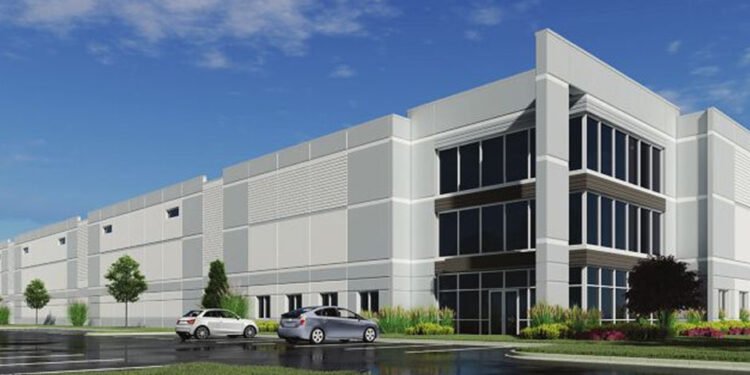Securing an industrial property for lease is a critical decision that can significantly impact your business’s operations and financial health. While finding the right property can propel your business forward, making mistakes during this process can lead to costly setbacks and operational challenges. By understanding common pitfalls, you can navigate the leasing process more effectively and secure a property that truly meets your needs. This guide outlines five crucial mistakes to avoid when leasing industrial property, helping you make a more informed and beneficial decision to secure an industrial property for lease with Goodman.
Underestimating Space Requirements
One of the most common mistakes businesses make when leasing industrial property is underestimating their space requirements. This error often stems from focusing solely on current needs without considering future growth or changes in operations. Leasing a space that’s too small can lead to inefficiencies, cramped working conditions, and the need for a costly move before the lease term ends.
To avoid this mistake, carefully analyze your current space utilization and project your needs for the next 3-5 years. Consider factors such as inventory fluctuations, equipment upgrades, and potential staff increases. It’s often wise to lease a slightly larger space than you currently need, allowing room for growth. Some businesses have found success in negotiating expansion options into their lease agreements, providing flexibility for future growth without committing to unnecessary space from the outset.
Overlooking Hidden Costs
Many lessees focus primarily on the base rent when evaluating industrial properties, overlooking additional costs that can significantly impact the total expense. These hidden costs can include common area maintenance (CAM) charges, utilities, property taxes, insurance, and maintenance responsibilities. Failing to account for these expenses can lead to budget overruns and financial strain.
Before signing a lease, request a detailed breakdown of all associated costs. Pay particular attention to how CAM charges are calculated and allocated among tenants. Some industrial properties may have higher utility costs due to outdated systems or poor insulation. It’s also crucial to understand your maintenance responsibilities – some leases may require tenants to handle significant repairs or replacements, which can be costly. By fully understanding the total cost of occupancy, you can make a more accurate comparison between properties and avoid unpleasant financial surprises down the line.
Neglecting Due Diligence on the Property and Landlord
In the rush to secure a property, some businesses fail to conduct thorough due diligence on both the property itself and the landlord. This oversight can lead to numerous issues, from unexpected property defects to difficult landlord relationships. A property that looks perfect on the surface may have hidden problems that could disrupt your operations or require costly repairs.
Take the time to thoroughly inspect the property, preferably with the help of a professional. Check for structural issues, assess the condition of key systems (electrical, plumbing, HVAC), and ensure the property complies with relevant regulations. Additionally, research the landlord or management company. Speak with current or former tenants if possible to gauge the landlord’s responsiveness to issues and overall approach to property management. A difficult landlord can turn an otherwise suitable property into a constant source of frustration.
Signing a Lease Without Legal Review
The complexity of commercial lease agreements often leads businesses to make the mistake of signing without a thorough legal review. Industrial property leases can contain complex clauses and legal jargon that may have significant implications for your business. Signing without fully understanding these terms can lock you into unfavorable conditions or leave you vulnerable to unexpected liabilities.
Always have a legal professional experienced in commercial real estate review your lease before signing. They can identify potentially problematic clauses, explain your rights and obligations, and negotiate better terms on your behalf. Pay particular attention to clauses regarding rent increases, maintenance responsibilities, and lease termination or renewal options. The cost of legal review is minimal compared to the potential expenses and headaches it can help you avoid.
Ignoring Location Factors
While the physical attributes of a property are important, some businesses make the mistake of overlooking crucial location factors. The location of your industrial property can impact everything from operational efficiency to employee satisfaction and customer accessibility. Failing to consider these factors can lead to increased costs, logistical challenges, and missed opportunities.
Evaluate the property’s proximity to suppliers, customers, and transportation hubs. Consider the local labor market – will you be able to attract and retain skilled workers in this location? Investigate local zoning laws and future development plans that could affect your operations. Don’t forget to assess the area’s safety and security, as this can impact insurance costs and the safety of your employees and assets. While the perfect location may come at a premium, the benefits it provides to your operations can often justify the additional cost.
By avoiding these five common mistakes, you can navigate the industrial property leasing process more effectively. Remember, securing the right property is not just about finding a space that fits your current needs, but about creating a foundation for your business’s future success and growth. Take your time, do your research, and don’t hesitate to seek professional advice when needed. The effort you put into finding and securing the right industrial property with the help of industrial buyers agents will pay dividends in the long run, supporting your business’s operations and contributing to its overall success.












